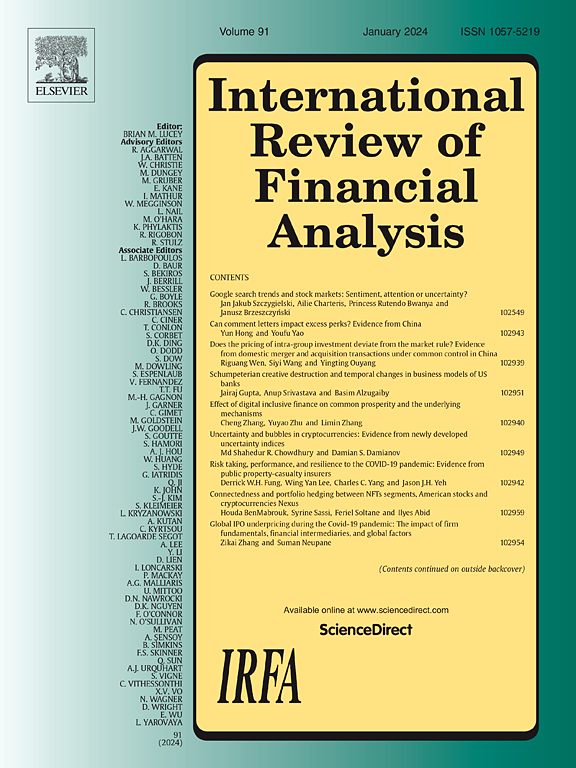Examining high-frequency patterns in Robinhood users’ trading behavior
IF 7.5
1区 经济学
Q1 BUSINESS, FINANCE
引用次数: 0
Abstract
Using intraday (hourly) and overnight changes in the number of Robinhood (RH) investors holding a stock, we examine their high-frequency trading behaviors in response to contemporaneous and lagged returns. RH investors do not react to contemporaneous returns. However, they respond to lagged intraday or overnight returns, exhibiting three high-frequency behaviors: (i) the number of RH investors increases more for stocks with extreme lagged returns than for those with moderate returns, suggesting attention-driven buying; (ii) this reaction is asymmetric, with larger increases in the number of RH users following extreme negative returns compared to extreme positive returns, suggesting that their contrarian buying is stronger than their momentum buying; (iii) this asymmetry is strongest immediately after extreme returns and dissipates over time. Compared to findings from daily data, our analysis shows that daily data underestimates this asymmetry. Further analyses reveal greater attention to overnight movements, exacerbated behaviors during COVID-19, and variation across firm sizes, with more contrarian buying for larger-cap firms.
检查罗宾汉用户交易行为的高频模式
利用罗宾汉(RH)投资者持有股票数量的日内(小时)和隔夜变化,我们研究了他们的高频交易行为对同期和滞后回报的响应。RH投资者不会对同期回报做出反应。然而,他们对滞后的日内或隔夜回报做出反应,表现出三种高频行为:(i)相对于中等回报的股票,相对于极端滞后回报的股票,RH投资者的数量增加更多,表明注意力驱动的购买;(ii)这种反应是不对称的,与极端正收益相比,极端负收益后RH用户数量的增加更大,这表明他们的反向购买比他们的动量购买更强烈;(iii)这种不对称性在收益达到极值后立即最强,并随着时间的推移而消散。与日常数据的发现相比,我们的分析表明,日常数据低估了这种不对称性。进一步的分析显示,人们对隔夜走势、COVID-19期间加剧的行为以及公司规模的差异更加关注,对大盘股公司的反向买入更多。
本文章由计算机程序翻译,如有差异,请以英文原文为准。
求助全文
约1分钟内获得全文
求助全文
来源期刊

International Review of Financial Analysis
BUSINESS, FINANCE-
CiteScore
10.30
自引率
9.80%
发文量
366
期刊介绍:
The International Review of Financial Analysis (IRFA) is an impartial refereed journal designed to serve as a platform for high-quality financial research. It welcomes a diverse range of financial research topics and maintains an unbiased selection process. While not limited to U.S.-centric subjects, IRFA, as its title suggests, is open to valuable research contributions from around the world.
 求助内容:
求助内容: 应助结果提醒方式:
应助结果提醒方式:


